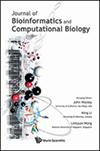在预测模型的开发或验证过程中考虑处理。
IF 0.7
4区 生物学
Q4 MATHEMATICAL & COMPUTATIONAL BIOLOGY
Journal of Bioinformatics and Computational Biology
Pub Date : 2022-12-01
DOI:10.1142/S0219720022710019
引用次数: 1
摘要
临床预测模型被广泛用于预测患者的不良结局,并常用于指导临床决策。临床数据通常由接受不同治疗的患者组成。许多预测建模研究未能适当地考虑到患者治疗的差异,这导致预测模型的发展显示出较差的准确性和通用性。在本文中,我们列出了用于处理患者治疗的最常用方法,并讨论了与每种方法相关的某些注意事项。我们认为,正确处理患者治疗的差异对于建立准确和可推广的模型至关重要。由于不同的疾病采用不同的治疗策略,正确处理患者治疗差异的最佳方法是针对每个个体情况。我们使用ma孢子急性淋巴细胞白血病数据集作为案例研究,以证明患者治疗差异的复杂性,并提供在评估预测模型时纳入治疗信息的建议。在临床数据中,患者通常根据具体情况进行治疗,特殊病例的发生频率比预期的要高。因此,在分析和评估临床预测模型时,有许多微妙之处需要考虑。本文章由计算机程序翻译,如有差异,请以英文原文为准。
Accounting for treatment during the development or validation of prediction models.
Clinical prediction models are widely used to predict adverse outcomes in patients, and are often employed to guide clinical decision-making. Clinical data typically consist of patients who received different treatments. Many prediction modeling studies fail to account for differences in patient treatment appropriately, which results in the development of prediction models that show poor accuracy and generalizability. In this paper, we list the most common methods used to handle patient treatments and discuss certain caveats associated with each method. We believe that proper handling of differences in patient treatment is crucial for the development of accurate and generalizable models. As different treatment strategies are employed for different diseases, the best approach to properly handle differences in patient treatment is specific to each individual situation. We use the Ma-Spore acute lymphoblastic leukemia data set as a case study to demonstrate the complexities associated with differences in patient treatment, and offer suggestions on incorporating treatment information during evaluation of prediction models. In clinical data, patients are typically treated on a case by case basis, with unique cases occurring more frequently than expected. Hence, there are many subtleties to consider during the analysis and evaluation of clinical prediction models.
求助全文
通过发布文献求助,成功后即可免费获取论文全文。
去求助
来源期刊

Journal of Bioinformatics and Computational Biology
MATHEMATICAL & COMPUTATIONAL BIOLOGY-
CiteScore
2.10
自引率
0.00%
发文量
57
期刊介绍:
The Journal of Bioinformatics and Computational Biology aims to publish high quality, original research articles, expository tutorial papers and review papers as well as short, critical comments on technical issues associated with the analysis of cellular information.
The research papers will be technical presentations of new assertions, discoveries and tools, intended for a narrower specialist community. The tutorials, reviews and critical commentary will be targeted at a broader readership of biologists who are interested in using computers but are not knowledgeable about scientific computing, and equally, computer scientists who have an interest in biology but are not familiar with current thrusts nor the language of biology. Such carefully chosen tutorials and articles should greatly accelerate the rate of entry of these new creative scientists into the field.
 求助内容:
求助内容: 应助结果提醒方式:
应助结果提醒方式:


